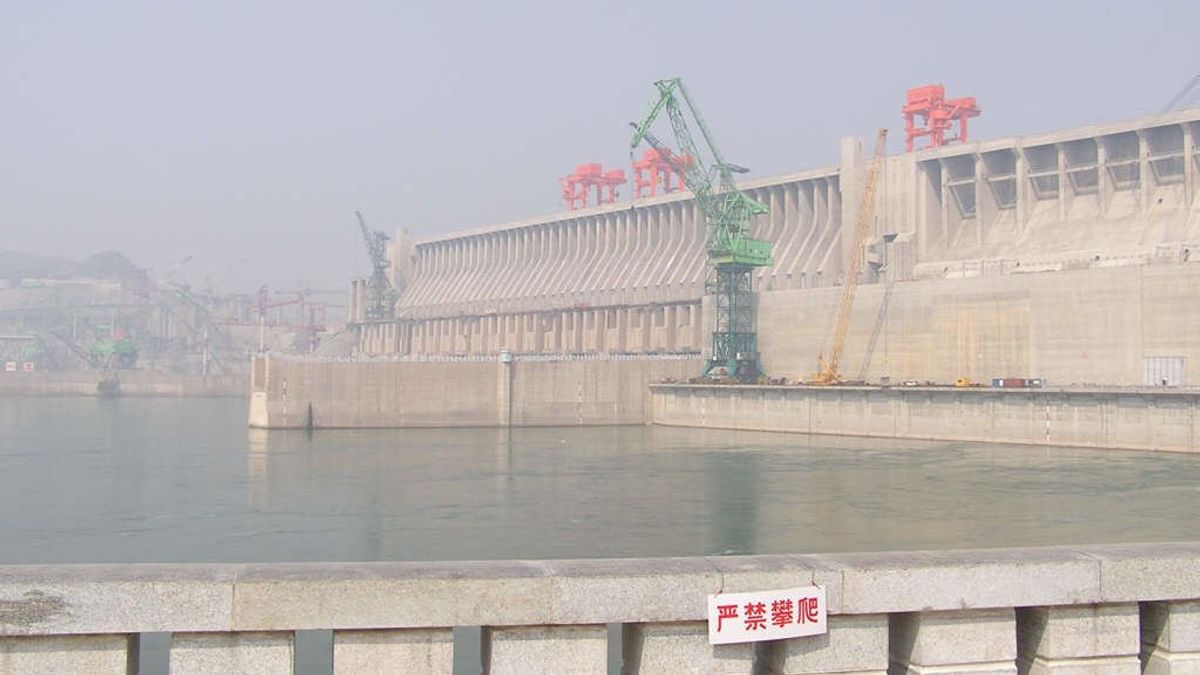JAKARTA - The prestigious Three Gorges Project (TGP) title as the world's largest hydroelectric power plant (PLTA) was not built in one night. It took a century for the generator on the dam built in China to provide electricity. How's the trip?
The idea of building the TGP was first coined by the Chinese revolutionist, Sun Yatsen. Citing the official website of the Chinese government, Sun submitted a design for a hydroelectric power plant on the Yangtze river in 1919.
The effort to make the largest energy source in the world is not an easy matter. The hydropower plant was actually almost completed in 1930 and 1932. However, due to the unstable political situation and the still fragile industrial base, development was delayed.
Construction did not resume until 1944 when the United States government promised massive technological and financial assistance. During preparation, construction was still going well, but again in the middle of the road the project came to a standstill.
Five years later, Chinese leaders Mao Zedong and Zhou Enlai expressed enthusiasm for resuming the mega project. New wishes could be realized again in 1970. The project was called Gezhouba.
Gezhouba is the first dam project to be constructed on the Yangtze River. Unfortunately in the early years of construction there was an explosion incident. And again the project had to be stopped for the third time.
After more than 60 years, since Sun Yatsen proposed the TGP, Prime Minister Deng Xiaoping revived the preparations for this construction in the 1980s. Officially, the TGP mega project ran massively in 1994.
The final roundNine years later on July 10, 2003, the first generator started operating. This TGP has a capacity of 22,500 megawatts (MW) of electricity. That amount is almost a third of Indonesia's total power generation capacity, which is around 69,600 MW, as reported on the website of the Ministry of Energy and Mineral Resources.
The hydropower plant, which has a length of 2,335 meters and reaches 185 meters high, was built at a cost of 24 billion US dollars. However, according to a report by National Geographic observers to analyze it, actually the money that can be digested can go deeper.
The construction of the PLTA TGP is not without controversy. This is because this project has been criticized for violating human rights. Reportedly, during construction, China was forced to relocate up to 1.2 million people. In addition, environmental criticism has also come from geologists.
In fact, in addition to providing super large electricity, why the Chinese government insists on building TGP is to minimize floods. According to reports, several major floods have occurred due to overflow of water from the Yangtze River. In 1954 alone, the floods caused by the overflowing river claimed 33 thousand lives.
The English, Chinese, Japanese, Arabic, and French versions are automatically generated by the AI. So there may still be inaccuracies in translating, please always see Indonesian as our main language. (system supported by DigitalSiber.id)









